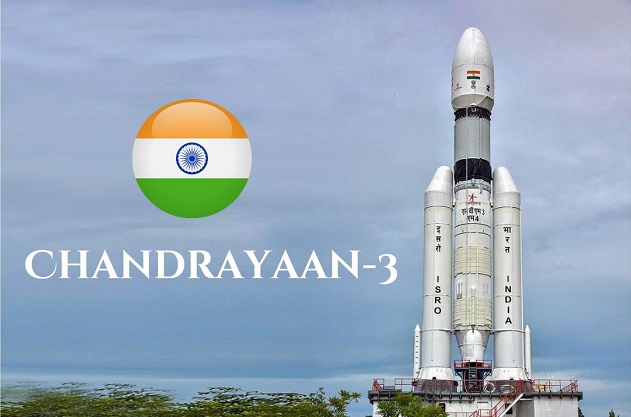Hold your breath and mark your calendars, space enthusiasts! The countdown has begun for India’s highly anticipated lunar expedition – Chandrayaan-3! Set to launch on the 14th of July 2023, and this is a historic moment that will once again put India at the forefront of space exploration.
Imagine the excitement, the nerves, and the sheer awe as the Indian Space Research Organization (ISRO) gears up to conquer new frontiers. Chandrayaan-3 is all set to soar into the night sky, carrying our dreams and aspirations to the lunar surface.
This time, the mission is bolder, brighter, and more refined than ever before. ISRO’s minds have studied past missions and perfected each detail for a faultless performance. With cutting-edge technology and unwavering determination, Chandrayaan-3 will pave the way for future lunar exploration and cement India’s position as a global space power.
Get ready to witness history as India embarks on its next lunar adventure. Join us as we delve into the captivating journey of Chandrayaan-3, where science meets imagination, and the Moon becomes our gateway to the stars!
India’s Lunar Journey: Chandrayaan’s Mission and Previous Setbacks
Chandrayaan-1
In October 2008, India made a groundbreaking leap into the realm of lunar exploration with the launch of Chandrayaan-1, its maiden lunar mission. Chandrayaan-1 circled the Moon, collecting data and taking high-resolution photos.
The primary reason for Chandrayaan-1’s premature termination was the spacecraft’s communication link malfunction. This resulted in losing contact and data transfer, making it impossible to continue the mission. Chandrayaan-1 gave valuable information about the Moon’s surface, minerals, and water ice near the poles.
Chandrayaan-2
Building upon the success of its predecessor, India launched Chandrayaan-2 in July 2019. This ambitious mission aimed to land a lander-rover combination, Vikram and Pragyan, respectively, on the lunar surface. Despite the planning and technology, the mission faced a challenge during the last stage.
Vikram experienced a communication glitch before touchdown, leading to a failed landing. The Lander did not reach its goal, yet the orbiter of Chandrayaan-2 stayed in orbit and conducted research. Chandrayaan-2 demonstrated India’s technical ability and reaffirmed its lunar exploration commitment..
Lessons Learned and Future Endeavors
The Chandrayaan missions, though only partially successful in achieving all objectives, have been essential stepping stones for India’s space exploration program. They have provided invaluable insights into lunar science, including discovering water molecules and detailed mapping of the Moon’s surface.
ISRO has learned crucial lessons from these missions, specifically communication systems, landing technology, and navigation. These lessons will be of great help for future lunar expeditions, Chandrayaan-3 included.
Chandrayaan-3: On the Path to Redemption
The upcoming lunar mission by the Indian Space Research Organization (ISRO) is expected to align with its predecessors, Chandrayaan-1 and Chandrayaan-2. While ISRO has not released specific details about Chandrayaan-3’s objectives, it is anticipated that the mission will aim to achieve the following goals:
- Lunar Surface Exploration: Chandrayaan-3 will carry lander and rover payloads to the lunar surface. The mission will focus on conducting in situ studies, analyzing the Moon’s geology, composition, and surface features in greater detail. This will provide intense information about the Moon’s history and evolution.
- Technology Validation: Like previous missions, Chandrayaan-3 will be a platform for testing and validating advanced technologies and techniques for future lunar missions. This includes landing and rover operations, autonomous navigation, and communication systems.
- Data Collection: The mission will gather high-resolution images, spectroscopic data, and other scientific measurements to study the Moon’s surface, mineralogy, and potential resources. This data will help scientists uncover new insights about the Moon’s composition and aid in furthering our knowledge of planetary processes.
- Collaborative Efforts: Chandrayaan-3 will probably involve collaborations with international space agencies and institutions. Partnerships and knowledge-sharing will foster scientific cooperation, enable resource-sharing, and expand the global community’s understanding of the Moon.
- Public Engagement: As with previous missions, Chandrayaan-3 will seek to inspire and engage the public, particularly students and young scientists, in the wonders of space exploration. It will create awareness, ignite curiosity, and encourage interest in science and technology.
The Components of Chandrayaan-3
ISRO states that “Chandrayaan-3 consists of an indigenous Lander module (LM), Propulsion module (PM) and a Rover to develop and demonstrate new technologies required for Interplanetary missions.”
A rover, propulsion, and lander module make up Chandrayaan 3. While the PM will provide propulsion and attitude control for the mission, the LM will oversee a soft landing on the lunar surface. The Rover will be used to investigate the lunar surface and gather data for research.
The Lander will be able to soft-land at a chosen location on the Moon and release the Rover, which will conduct in situ chemical analysis of the lunar surface while it is moving. There are scientific payloads on the Lander and the Rover that will conduct lunar surface tests. The primary role of the PM is to transport the LM from the launch vehicle injection to the final lunar polar orbit at 100 km and to separate the LM from the PM.
Conclusion
India is poised to leave another lasting impression on the history of space exploration as Chandrayaan 3 gets ready for its big launch. The mission embodies the exploration, creativity and determination of the Indian space program.
Each mission carried out by ISRO advances our understanding of the Moon, clears the way for additional lunar exploration, and solidifies India’s position as a world leader in space research. A huge step forward, Chandrayaan 3 captivated the country and encouraged future generations to aim high.

